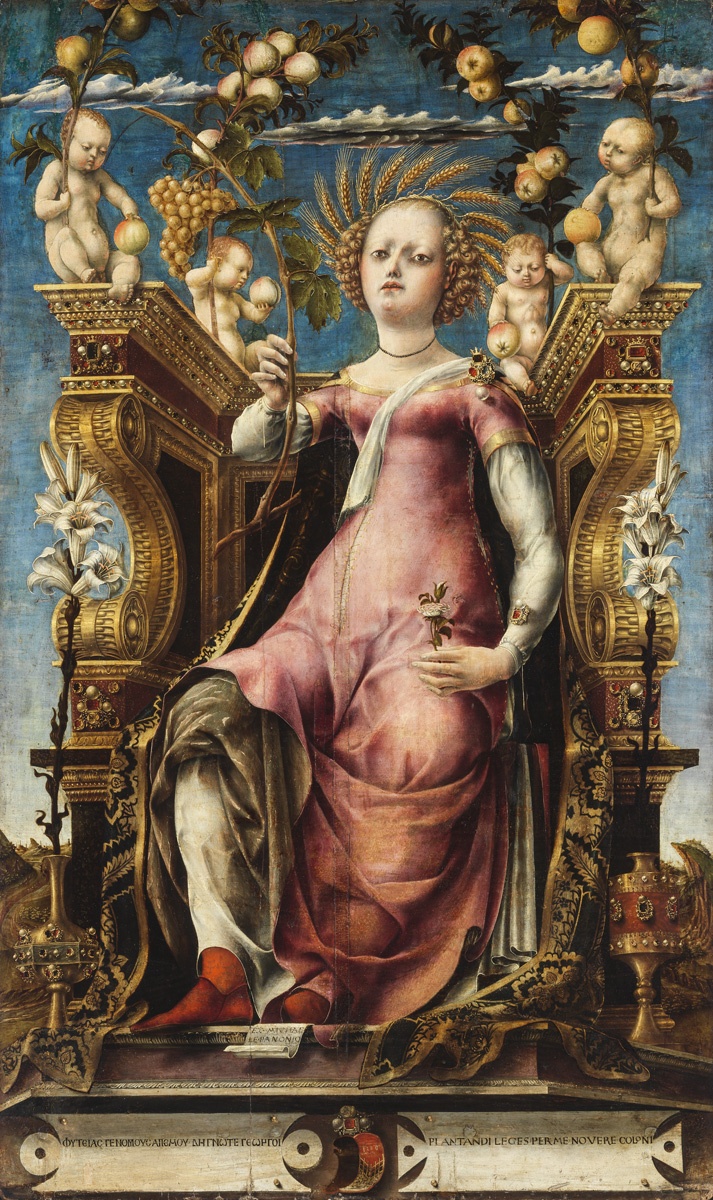The wealthy urban bourgeoisie of Renaissance Italy liked to take refuge from the summer heat or epidemics in their countryside villas. As Boccaccio recounts in the Decameron, here they would relax, with instructive and amusing stories, music, dance and witty conversation - in other words, they paid tribute to the muses. It was no coincidence, then, that they often adorned the walls with pictures of the muses. This was the case in what was perhaps one of the most famous summer retreats, the dukes of Ferrara’s villa Belfiore (’beautiful flower’), where this picture comes from.Michele Pannonio’s name suggests that he was from Hungary (Pannonia). He may have been a friend of another famous Hungarian in the court at Ferrara, the poet Janus Pannonius, whose master Guarino da Verona devised the concept for the muses’ at Belfiore. The surviving text reveals that here we see Thalia, who is shown in the role of the muse of agriculture rather than the patroness of comedy. This is indicated by the motto at the bottom of the picture (’I taught man to plant’), and also the mature ears of wheat surrounding Thalia’s head, the bunch of grapes in her hand, and the luxuriant fruit surrounding her throne. Her pregnant state, unusual for the muses, further reinforces the idea of fertility. The willowy form of Thalia’s body, her graceful curves and soft contours recall late Gothic taste. The lilies and swags of fruit, painted with robust naturalism, are more modern in style: they may have been painted by the gifted rival of Pannonio’s, Cosme Tura. Axel Vécsey
en

